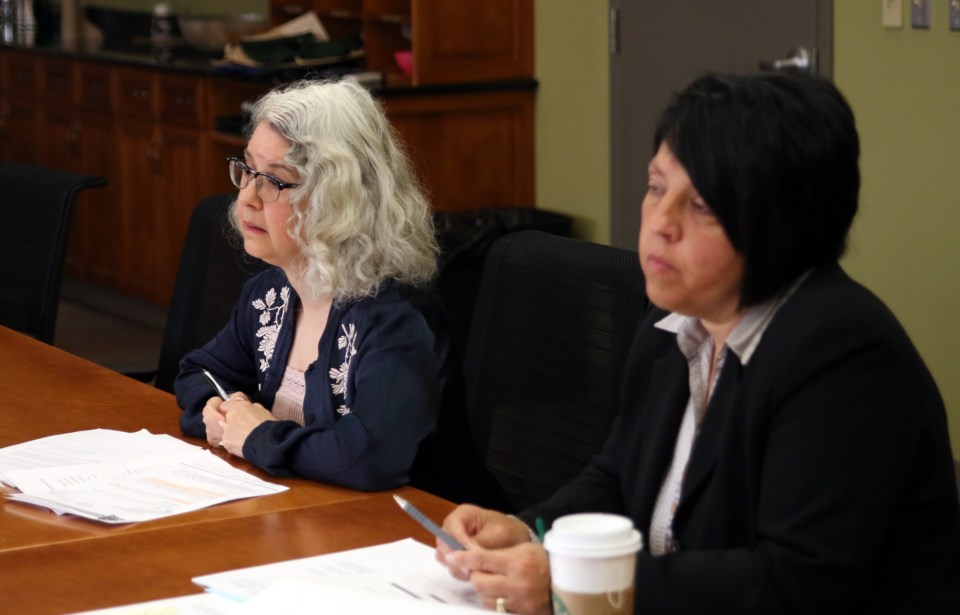THUNDER BAY - The Thunder Bay Police Service is reflecting a more diverse workforce but it is still falling behind in some service areas when it comes to being a true mirror to the community.
“The police are the community, the community are the police,” said acting Thunder Bay Police Service chief, Sylvie Hauth. “Those are the fundamental principles of community policing. What we really want is to have a force that will be representative of who we are in Thunder Bay. We are doing well in certain areas and not so well in others.”
During a meeting of the Thunder Bay Police Service board on Tuesday, Leisa Desmoulins, a consultant for the service and professor at Lakehead University, provided an update on the Organizational Change Project currently underway, including results of a 2018 workforce census of the force conducted last December.
The results of the census were compared to the 2016 Thunder Bay census and the 2017 Police Administration Survey.
“When we look at the areas where Thunder Bay Police Service are doing well, we can see that for visible minority police officers, they actually outpace the community and for women in senior management, police officers outpace the community,” Desmoulins said. “So that is the good news in terms of what was found.”
In the Thunder Bay Police Service, 16 per cent of constables are female compared to the provincial average of 21 per cent. However, in terms of senior officers, 33 per cent are female in Thunder Bay, compared to 14 per cent province wide.
Visible minorities also represent 4.9 per cent of the service, compared to 4.3 per cent of the general population in the city. But when compared to sworn officers, the provincial average of 29 per cent is far above Thunder Bay Police’s six per cent.
“In terms of areas we are going to look at further, civilians, visible minorities, as well as Aboriginal people where the Thunder Bay Police Service does not reflect the community,” Desmoulins said.
In the civilian branch of the Thunder Bay Police Service, only 2.1 per cent identified as a visible minority, while 4.3 per cent did in the Thunder Bay census.
When it comes to Aboriginal people, 13 per cent in the city census identified as Aboriginal, compared to 7.9 per cent with the Thunder Bay Police Service. Among sworn officers, the local service had 11 per cent compared to 2.8 per cent provincially, but in the civilian branch, no members identified as Aboriginal locally.
“Obviously we have some work to do,” Hauth said. “It’s going to be another part of our Organizational Change Project. One area is actually recruiting. It’s going to be in terms of targeting not only in terms of sworn officers, but looking at our civilian compliment.”
Many offices approaching retirement age
With the Thunder Bay Police Service competing against other services such as the Ontario Provincial Police and the Nishnawbe Aski Police Service, Hauth said more creative approaches to recruitment are necessary.
“The committee we put together, it’s really to look at what has worked in other areas, not just in Thunder Bay, but what has worked in the province, what has worked in Canada and really bring that back to us as a service so we can be productive and really engage in having meaningful recruitment strategies,” she said.
The working group, which consists of three members of the community and four police officers, will be looking at recruitment strategies over the summer and provide an update to the board in September.
“They are going to look at some ways they can attract people who traditionally haven’t applied to the Thunder Bay Police, whether that is civilian or sworn,” Desmoulins said.
Within the Thunder Bay Police Service, 47 per cent of officers fall within the age range of 45 to 54-years-old, meaning there will be a significant number of members retiring in the coming years.
During the meeting, member Joe Virdiramo asked if it the police service should look at retirement incentives to free up more recruitment spaces.
However, Hauth says given the number of officers likely to retire, incentives are probably not needed.
“I think through attrition, whether the incentives are there, people will be looking at retiring in the next few years to the point that even offering incentives, we may not be able to keep up having to replace,” she said. “I don’t want to create a bigger problem with the attrition we are going to see.”
